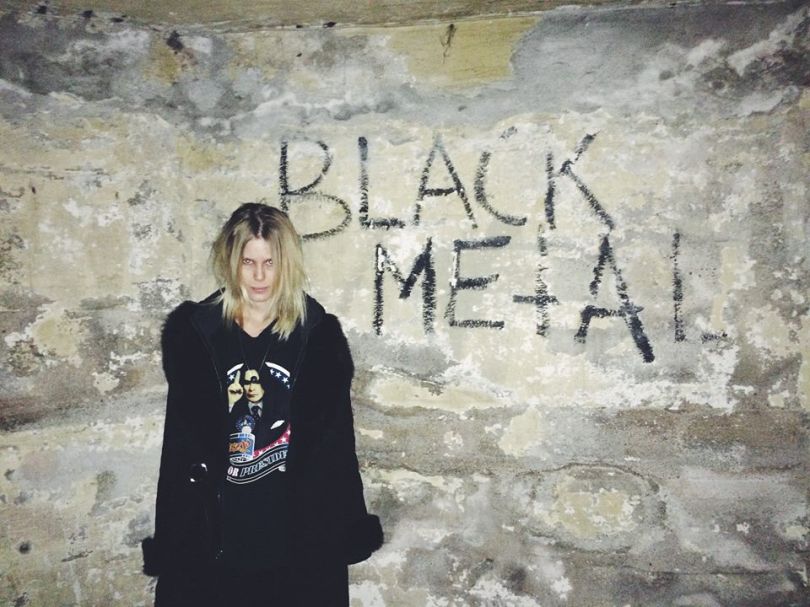Heavy metal has long been a shelter for outsiders, yet in Europe foremost, the genre has had serious problems with the marginalisation of women and cultural isolationism. But to paraphrase The Scorpions, the winds of change are blowing.
With the notable exceptions of Girlschool and Doro Pesch, women were all but invisible in the Metal community until the late 1990s, when a number of breakout metal bands recruited female vocalists: Nightwish, After Forever, and Arch Enemy foremost. Though metal culture is overwhelmingly focused on the art rather than the lives or attributes of the artist (metal media is unlike other genres, mostly uninterested in the private lives of its stars), this courtesy has historically not been extended to women. Discussions among metalheads often shift dramatically from musical fidelity of male artists to ‘female artist x is so hot/not hot.’
In tackling this culture, Angela Gossow of Arch Enemy deserves special credit. As part of one of the most male dominated sub-genres, her soaring death metal growls carved out a place for women that few had even considered. Now women scream vocals for such bands as Jinjer, The Charm The Fury, [In Mute], and The Agonist.
Despite the role of women as vocalists, their progress as instrumentalists has been painfully slow. In the early 2000s, several women found roles as folk musicians and keyboardists in folk metal bands such as Ensiferum and Eluveitie, and Liz Buckingham also began her longstanding tenure as guitarist for doom metal band Electric Wizard. But for near a decade and a half since, it looked as though nothing was changing.
There is, however, reason to believe that female representation is once again increasing. Take the Slovene festival Metaldays: Comparing the line ups of the festival since 2014, there has been a two thirds increase in the proportion of female musicians (still only 5.4 percent of all musicians who performed, but it’s a start). Women are finding roles as drummers, guitarists, bassists, and vocalists in bands such as Sisters of Suffocation, Myrkur, Delain, Nervosa, Frozen Crown, ThunderMother, and Kiske-Somerville.
On the other elephant in the metal room: the community’s cultural isolation (in Europe foremost), compounds the genre’s deserved image as a ‘white boy thing.’ Metal in the ‘core’ of Europe, and to a lesser extent in North America, routinely affects metal the world over, but the reverse is rarely true. For example, despite a noble effort by thrash metal band Anthrax in 1991 in collaborating and touring with hip-hop group Public Enemy, the combination of the metal of marginalised white youth with the rap and hip-hop of marginalisedBblack youth failed to make a distinct cultural impact in most of the metal community. It was largely confined to North America and self-contained sub genres, which unlike the Euro-popular death, power, black, and folk sub genres seemed to intersect little with other metal scenes.
Take the latter three of those sub-genres, all of which arose in their current form in very specific European circumstances: Black metal from disaffected and lonely Norwegian youth raging against the bleak loneliness of brutal winters and everything else besides; folk metal from the fusion of European folk culture, mythology, and music with metal; and power metal from the dual currents of manifesting a European mythology-inspired uber-masculine hero complex and as a creative outlet for fantasy fiction nerds.
However, many of these genres are undergoing major cultural shifts. Two decades after the explosion in Europe of folk metal as a genre, cultures the world over have adapted their own folk music, and begun re-exporting it to Europe. From Mongolia and Inner Mongolia alone we have Tengger Cavalry, Ego Fall, Hanggai, and Nine Treasures, the latter of which has been making regular and highly popular appearances at European festivals.
Power metal (and I use the term very loosely here) also evolved, embracing a nuanced optimism more akin to the rock and roll of the 1960s than the Thrash or Glam of the 80s. Bands like Delain and Epica rage against social and personal issues, but maintain a rigorous optimism. European Metal has also been embracing perspectives well beyond its borders. Austrian metal record label Napalm Records recently signed the New Zealand band Alien Weaponry. A trio of Kiwi teenagers singing partly in Maori, they recount the trials and terrors faced by the native population during the colonisation of New Zealand.
As Europe becomes more ethnically diverse and issues of ethnic marginalisation more pronounced, it is perhaps not a coincidence that the combination of rap and metal is making rightful headway. Body Count, best known as the Heavy metal vehicle of Ice-T (though this is an unjust description), is finally making traction in Europe with their latest album, ‘Bloodlust.’ A brutal album that rages against the issues of violent crime, police brutality, and marginalisation of African America youth, it has propelled them to a large European tour.
Further, and indigenous to Europe, a generation of multicultural youth has year by year become a greater presence in the camps of the continent’s festivals. They are now finding their way into some of the most promising new bands: Frozen Crown, Alpha Tiger, Rage of Light, and To the Rats and Wolves among them.
There’s a ways still to go, but one day soon, maybe metal will be for everyone.

